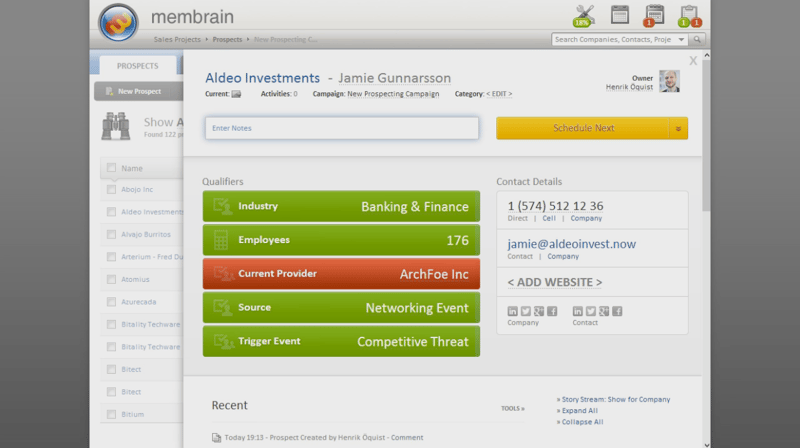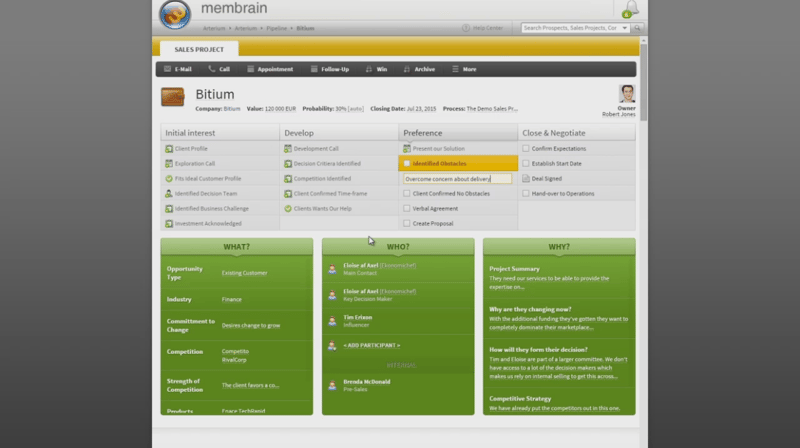
How to build a qualifying process that works for your sales team
Nearly every sales organization I talk to says they know who their best fit prospects are, yet almost none of them have a clearly defined process for ensuring only qualified prospects make it into the sales pipeline. This, despite the fact that unqualified prospects waste massive amounts of time for salespeople and their managers alike, and simultaneously diminish the reliability of sales forecasts.
Building an effective qualifying process doesn’t have to be difficult, and it’s essential if you want a consistently executed sales process. The keys to success are following the right steps, and using the right tools. Here’s a guide to getting the job done.
1. Identify qualification criteria
As I discussed last week, most sales organizations do not have a clear definition of what constitutes a qualified prospect, let alone a definition that lines up with validated criteria. Yet without this vital information, salespeople are stuck acting on gut instinct and optimism to decide who gets put in the pipeline.
The first step in designing a qualification process that works for your sales team, is taking the time to understand what makes a qualified prospect, and then baking that definition into the process.
Basic criteria to consider include:
- Industry
- Size (revenue, number of employees, etc.)
- Geography
These alone hardly provide a full picture, however. Two similarly sized companies with similar revenues in the same industry and territory could be at entirely different places in their need for your product, in what other competition they’re considering, and what their internal ecosystem looks like. Any of these factors and many others can impact the likelihood that they will do business with you. Some factors to consider adding to your qualification definition:
- Specific challenges they’re facing (or will be facing soon)
- Their attitude toward change
- Existing relationship with our company
- Competing vendors
- Their timeline to make a decision
- Who inside the organization should become our sponsor
- Their main motivation triggers—why they’re considering a change
This last point bears emphasizing, because it is often overlooked as a qualifying criteria. An organization that is considering a change because they have budget to burn is in an entirely different position than one that wants to move because they’re experiencing significant pain. One is not necessarily a better motivator than the other, but it can have an impact on close rates.
It’s important also to note that this portion of the qualification process, when done right, will be in a continuous state of improvement as you gather data and learn which criteria genuinely matter. More on that in the “analyze” step at bottom.
2. Qualify INTO the pipeline
Too frequently, salespeople dump prospects into the sales pipeline who are either not ready or not qualified. This is a natural tendency based on the desire to look busy and productive, but the result is inflated pipelines and unreliable forecasting.
To combat this tendency, bake qualification criteria into the process so that salespeople don’t launch the sales opportunity process until the prospect has been qualified in according to the set qualifications.
This can be challenging without the right tools. Software like Membrain separates the prospecting workflow from the main sales opportunity workflow (this article explains our reasoning), and only recommends prospects to move into the sales workflow when they’ve met all the criteria. A visual format makes it easy for salespeople to see which criteria remain to be validated, and removes prospects from the workflow automatically when they become disqualified.

3. Qualify OUT of the pipeline
Once a prospect enters the sales pipeline, the qualification process is not over. It’s important to build qualifying criteria throughout the sales process, so your salespeople and managers know when the gig is up, and can stop throwing resources at prospects that are no longer likely to close.
The most effective tools for continuous qualification provide visual feedback so that salespeople can easily see areas where prospects may be declining in quality. This allows them to act to either increase the prospect’s quality, or to disqualify them out of the process if necessary.
4. Organize qualifying and disqualifying information
Many factors can lead to disqualification, but once the prospect is in the pipeline, it’s rare that a single factor is the culprit. Often, an unqualified prospect will exhibit a pattern of behaviors (or lack thereof) that leads to the disqualification. Because it’s not just one thing, it can be difficult for salespeople to quickly identify when a prospect is heading down that path.
To help with this, organize qualification information into “buckets,” and present it visually so the salesperson and their managers can quickly see when a disqualifying pattern begins to emerge.
For instance, in Membrain, the sales opportunity workflow presents three boxes below the sales process workflow. Each of these boxes will contain different types of information. We recommend that the information be divided thus:

Left box
Information that the salesperson (or marketing department) can gain through research, in the form of "hard facts". This may include:
- Industry
- Size of organization
- Geography
- Competition
- Scores, such as an ideal customer fit score or a marketing automation score
Middle box
Information about the people involved in the buying process. This may include:
- Name of contacts and their titles
- Their role in this particular buying decision
- Their attitude toward the process
- How much influence each one has
Right box
"Soft" information that the salesperson and the client will be discussing. This may include:
- Description of their buying process
- Why there's a need for change and improvement
- Timing - why now? What's to prevent them from not doing anything?
- Summary of perceived risks that will need to be overcome
In such a visual presentation, the salesperson can quickly see what additional information they need to gather to confirm qualification, as well as any problem areas that may lead to disqualification.
5. Analyze and optimize
Most organizations, when implementing a better qualification process, won’t have a clear picture of which criteria really matter. That’s where analysis and optimization comes in. Once the process is in place, and managed using the right tools, it becomes a simple matter to look at the prospects who close and see which criteria they have in common. These become qualification criteria. Likewise, managers and leaders can look at those prospects who don’t close, and see which criteria they have in common. These become disqualification criteria.
Again, most traditional CRMs don’t provide the functionality to do this effectively. A tool like Membrain gives sales leaders the ability to effectively compare against multiple criteria at any level. Analysis happens automatically, feeding insights directly to the team, allowing continuous improvement.

By George Brontén
George is the founder & CEO of Membrain, the Sales Enablement CRM that makes it easy to execute your sales strategy. A life-long entrepreneur with 20 years of experience in the software space and a passion for sales and marketing. With the life motto "Don't settle for mainstream", he is always looking for new ways to achieve improved business results using innovative software, skills, and processes. George is also the author of the book Stop Killing Deals and the host of the Stop Killing Deals webinar and podcast series.
Find out more about George Brontén on LinkedIn








